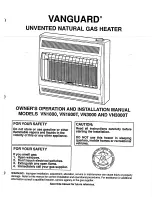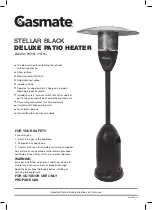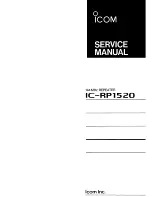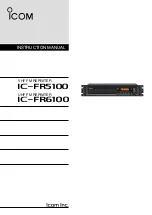
INSTANT HEAT 4 DUCTED
Retain this card for operating instructions and warranty details
Please read carefully
Read these instructions completely before starting
installation.
The infrared lamps heat by direct radiation rather than by
heating the air in the room, so the Instant Heat 4 should be
located directly over the drying area.
It must not be installed where there is a possibility of water
splashing onto the lamps. Locate the Instant Heat 4 in
accordance with the requirements of the SAA/SANZ Wiring
Rules AS/NZS 3000 relating to damp situations. This means
that no part of the Instant Heat 4 may be located directly
above any part of the bath or shower recess or enclosure. For
unenclosed showers refer to Wiring Rules conditions.
For information on switch locations, refer to Wiring Rules
AS/NZS 3000
Note: Steam will only be removed if there is sufficient flow of
air through the room. Ensure adequate inlets exist through
windows, vents or under the door. Air flow path from the inlet
to the fan should ideally pass over the steam sources. See over
– ‘Getting the most from your Instant Heat 4’.
Note: Instant Heat 4 must be installed horizontally in ceiling
by a licensed electrical contractor or similarly qualified person.
Regulations concerning the discharge of air have to be
fulfilled. The Instant Heat has a free air discharge of 240m³/hr
and care should be taken that airflow throughout meets
specific requirements in building regulations. Local building
codes may require venting to the outside. Ducting must be
fitted and vented to the outside using exterior grille provided
as shown in figure 1 and 2.
To duct to the outside connect the
onto the outlet side of the exhaust
fan. After installing the outlet grille
to your eaves wall, connect the
flexible duct (max 3m cut if
necessary, remember to avoid
bends etc) and affix using the duct
tape provided.
Location:
The Instant Heat is for ceiling
mounting only, with the lowest
point to be at least 2.4 metres
above floor level. It is not intended
to be installed in wardrobes or
within 300mm of sides of walls, as
per Figure 3. There is a danger of
combustion if placed too close to
curtains or other flammable
materials
Ceiling Preparation and
Installation:
Instant Heat 4 may be installed in
the ceiling cavity between joists
using the built-in clip fasteners.
Correct installation requires the
cavity to have a minimum height of
260mm for safe operation. The
clearances between Instant Heat
and surrounding joists and above
ceiling shown in Figures 4 and 5
shall be observed. Thermal
insulation or similiar material shall
not be placed on top of the Instant
Heat, and adjacent material to the
side shall be kept clear to a
minimum distance of 300m. Joists, beams and rafters shall
not be cut or notched to install Instant Heat.
AFTER DETERMINING LOCATION OF THE HEATER USE THIS
CARD AS A TEMPLATE TO MARK OUT AND CUT AN APERTURE
300 x 300mm (Fig 6).
If adequate support is not available for Instant Heat 4, it may
be necessary to provide for extra strengthening.
Final assembly:
Check that the power to the unit is
off.
All models:
Insert infrared lamps firmly into the
sockets to ensure good electrical
contact and long life. Centralise the
lamp surround. Wipe the surround
and bulbs clean. Connect the power
and check all functions.
Wiring:
Three switches on an Excel wall plate are supplied. Snap the
switches into the plate. Do not use with any solid state speed
control. Wall plate should be located so that the switches are
not within reach of a person in a bath or shower. Wiring
connection is as per figure 8.
For information on switch locations, refer to Wiring Rules
AS/NZS 3000
Standard roof application
Multi storey application
Fig 3
Fig 7
Fig 8
Fig 4
Fig 5
Fig 6
Fig 1
Fig 2
For additional information, contact HPM
Australia: 1300 369 777
New Zealand: 0800 476 009
www.hpm.com.au
Distibuted by HPM Industries Pty Ltd
PO BOX 6245
Silverwater, NSW 1811
210mm min
height clearance
75mm side clearance
220mm
Joist
Joist
Joist
300mm
300mm
Fixing to ceiling:
Remove all lamps. Push the heat lamp body into the opening
allowing the springs to snap open. To secure, push the lower
ends of the springs apart. (Fig 7) The ceiling board thickness
should be adjusted to enable the springs to be fitted without
excessive force.
Instant Heat 4
Ducted Body
Template
3DSPEC
300mm
300mm
Wall




















